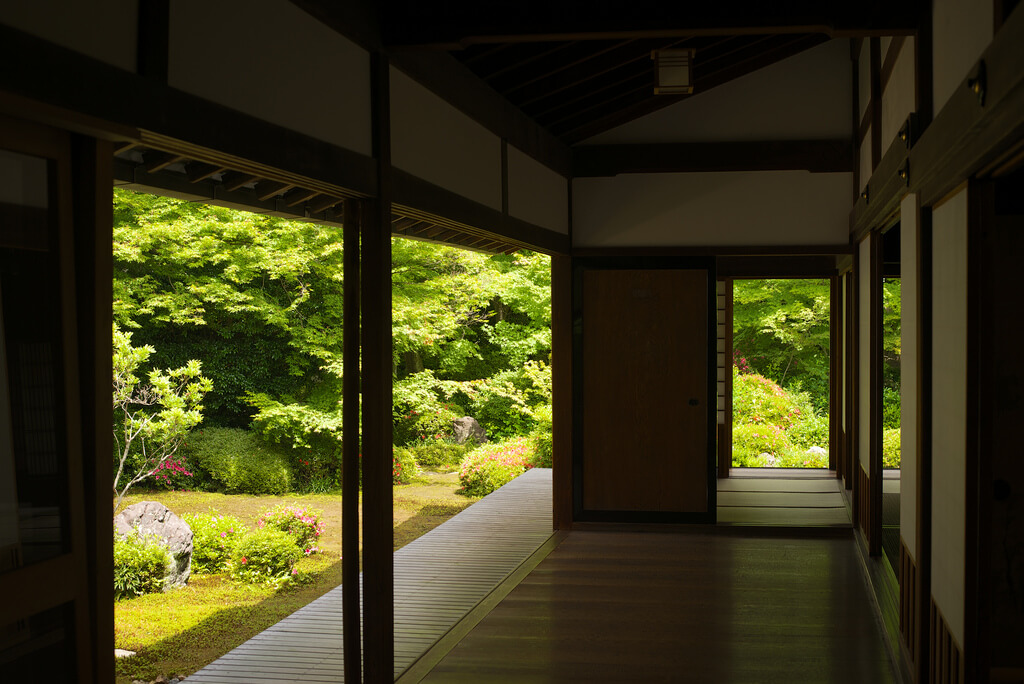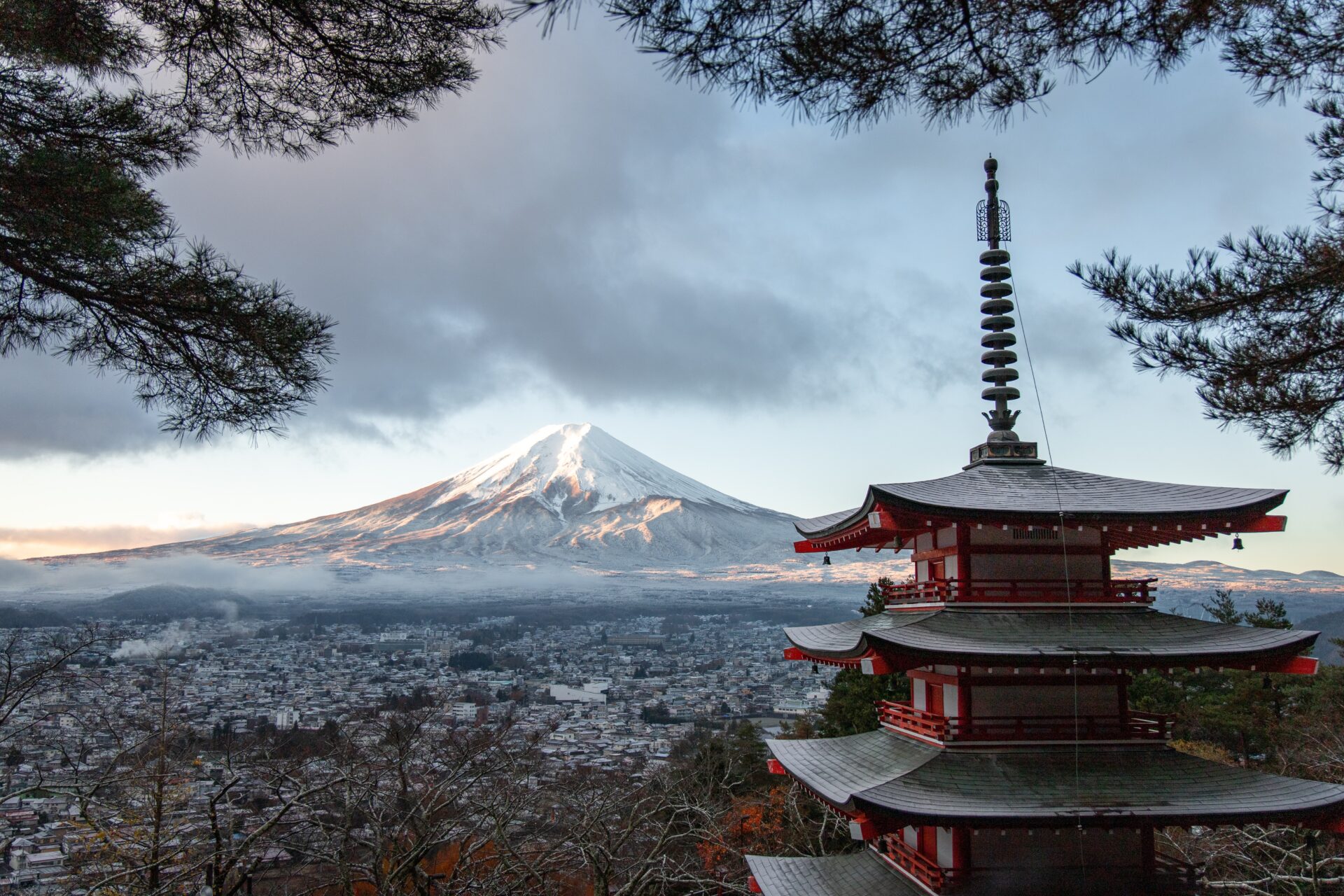
Miho Shimizu is a Japanese freelance writer settled in Shizuoka with her husband and two rabbits. Fascinated with traveling at the age of 18, she has spent most of her long holidays exploring incredible spots around Japan. She also loves to listen to music, draw, and read novels over a cup of green tea.
This post may contain some affiliate links. When you click through and make a purchase we may receive some commission, at no extra cost to you.
Widely known as the ancient capital of Japan, Kyoto is home to historic temples and shrines which attract numerous tourists from around the world. Among them, Kiyomizu Temple is one of Kyoto’s most famous temples and is officially recognized as a UNESCO World Heritage Site. This beautiful Buddhist temple boasts 1,300 years of history and is often featured on guide books as a must-visit tourist spot for anyone visiting Kyoto. Whether you have visited the temple before or are planning your first visit, this article will give you helpful insight about the Temple, and how to make the most of your time there!
1. What is Kiyomizu-dera?
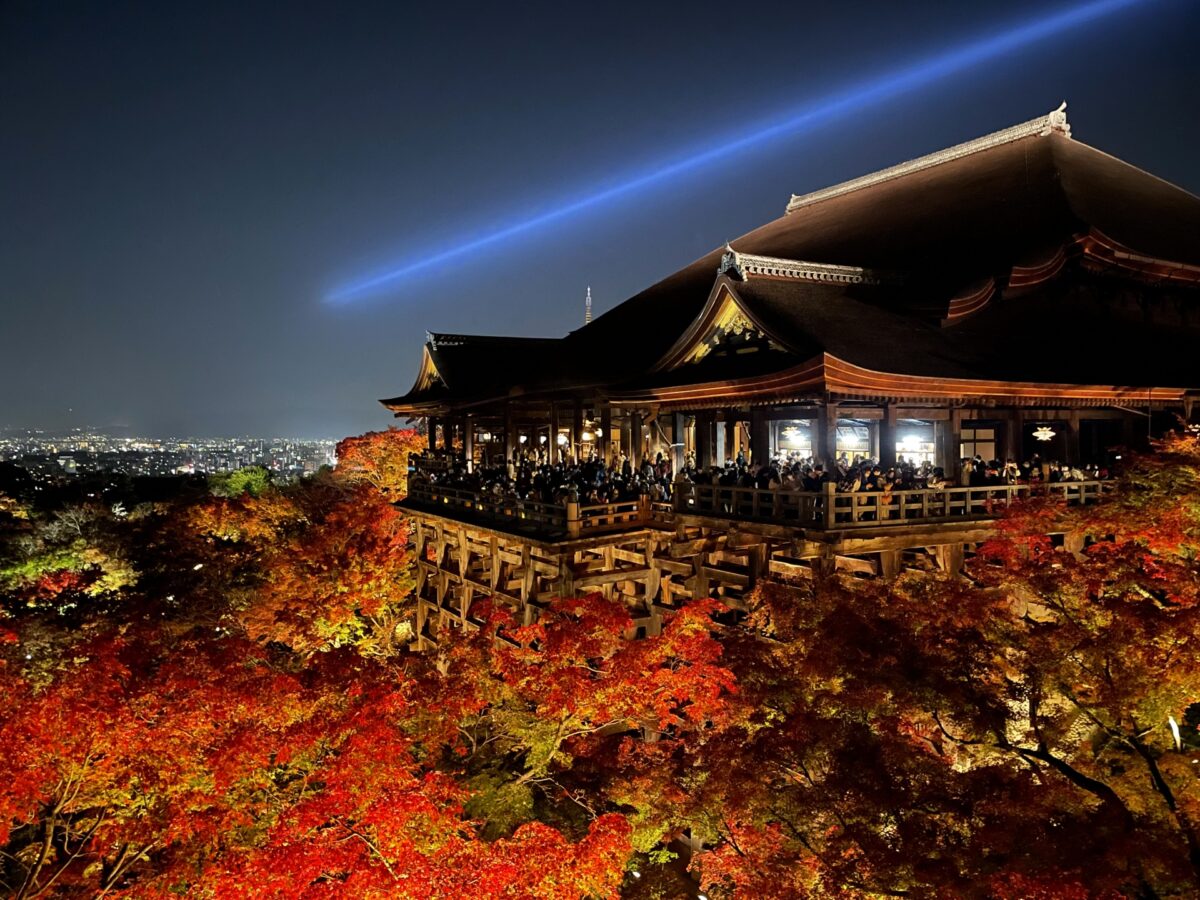
Kiyomizu Temple is a sacred Buddhist temple which was founded in 778. This world-famous temple is located in the Higashiyama district, the eastern part of Kyoto city. Along with other historic landmarks and architecture in Kyoto, Kiyomizu Temple was officially added to the list of UNESCO World Heritage Sites in 1994.
Originally built in 778, the main hall of Kiyomizu Temple has been burned down by fires a number of times over the years. The current building was reconstructed in 1633 during the early Edo Period.

Kiyomizu Temple is probably best known for its giant wooden stage which is loved as a symbol of the temple. This stage stands about 13 meters high above a steep hillside, and offers breathtaking views of the city and the surrounding mountains in the distance. During the spring season, this temple is a popular cherry blossom viewing spot, and attracts people from all over Japan. Fall is also an ideal time to visit, especially if you want to enjoy stunning autumn leaves!
2. How to get to Kiyomizu Temple
The best way to get to Kiyomizu Temple from Kyoto station is by bus. From the main bus terminal at JR Kyoto station, take the Kyoto City Bus (No.100 or No.206), and it is about a 10-minute ride to Gojo-zaka or Kiyomizu-michi bus stop. From there, it is about a 10-minute walk to the Temple.
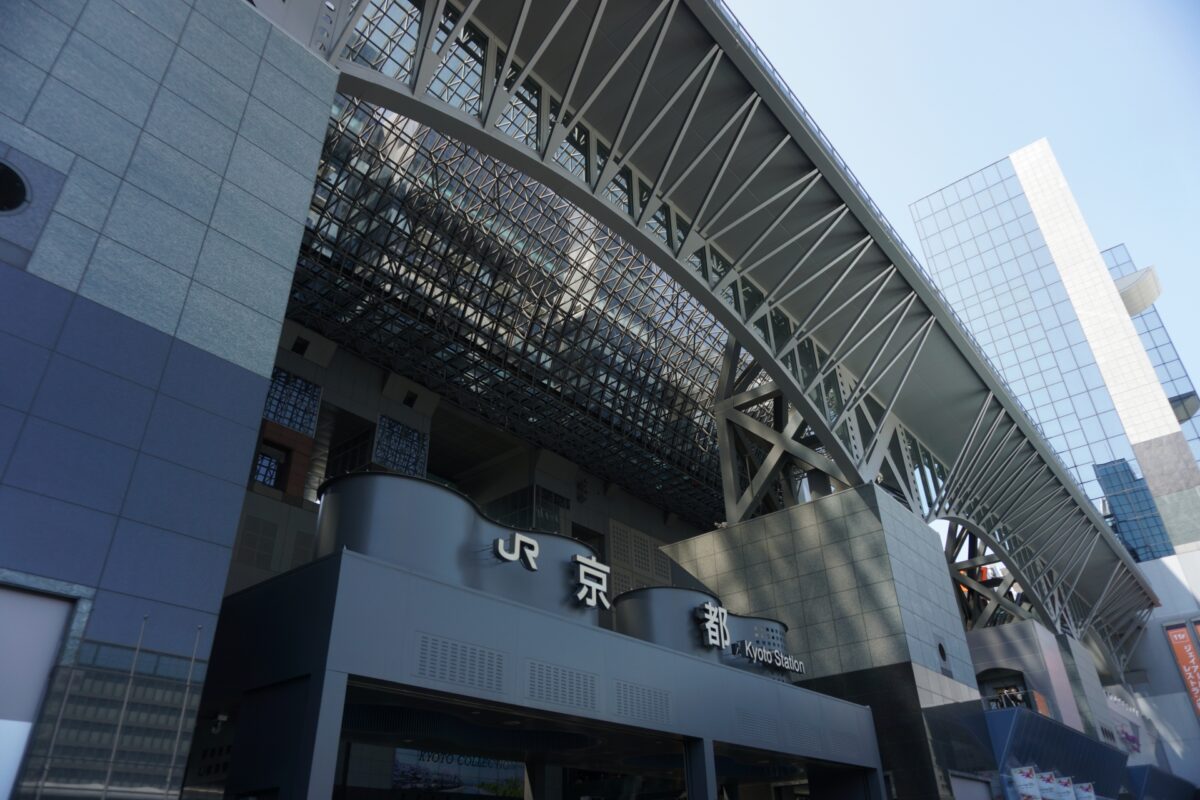
Fare (From Kyoto station to Kiyomizu Temple)
・230yen (adults)
・120yen (children 6 – 12 years old)
Make sure to check out the “Kyoto Subway, Bus One-day Pass”, which will help you get around Kyoto easily and smoothly. This pass is a one-day unlimited access pass for public transport that includes the Kyoto City Buses, Kyoto Municipal Subway Lines and Keihan Bus Routes for only 1,100 yen. Visit their website for more information.
3. Things to do at Kiyomizu Temple
Niomon Gate (仁王門)
Niomon Gate is an iconic red gate at the main entrance of Kiyomizu-dera. Visitors walk through the gate to enter the vast temple grounds which are home to historical buildings as well as numerous natural beauties. The original gate was destroyed during one of the wars in Japan from 1467 – 1477. Officially designated as an Important Cultural Property, the present Niomon Gate has survived for centuries after being reconstructed in the late 15th century. Before taking the stone steps leading up to the gate, you will find two adorable statues of guardian dogs (called “Koma-inu” 狛犬 in Japanese) on both sides.
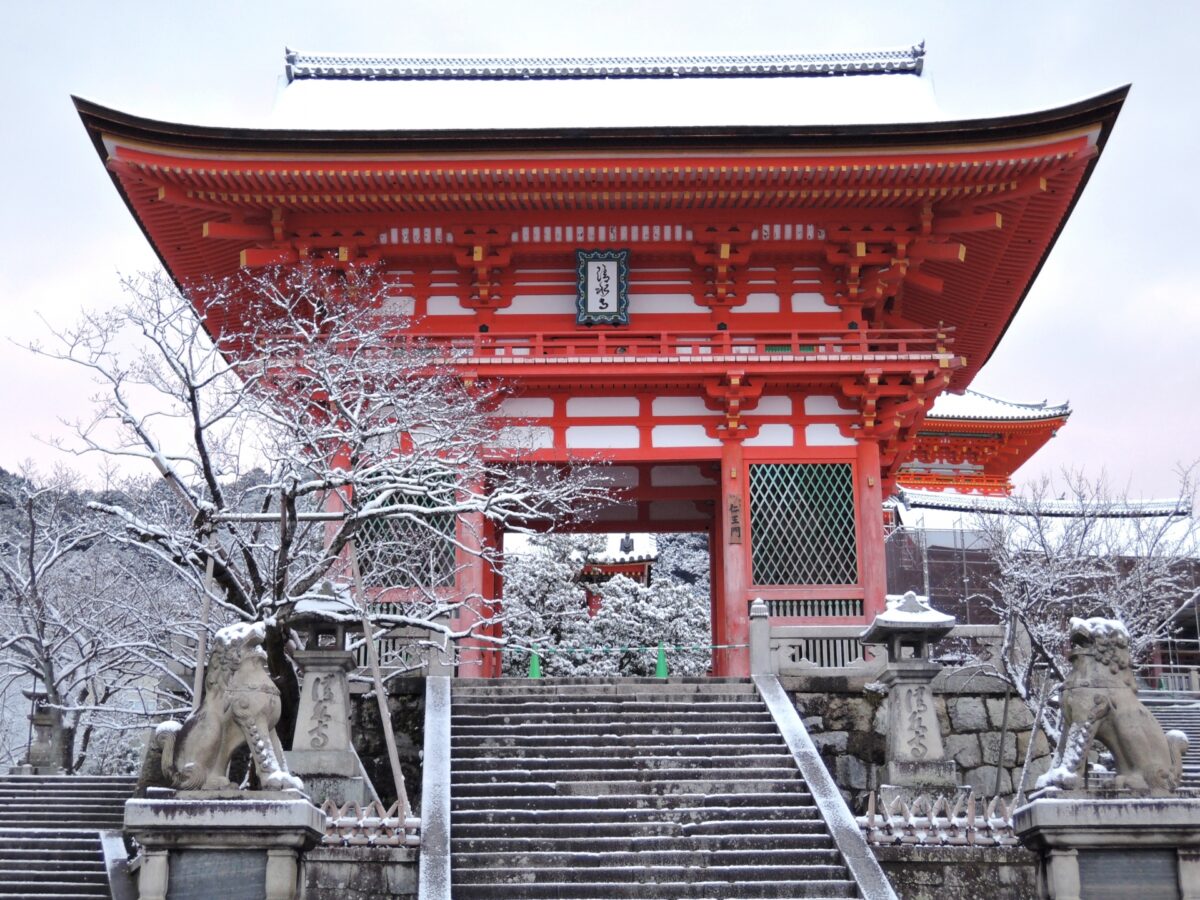
Main Hall (本堂)
The Main Hall of Kiyomizu Temple is a beautiful wooden structure which was completed in 1633. This symbolic building is designated as a National Treasure and features a huge wooden stage standing on the hillside of Mt. Otowa. This wooden stage consists of surprisingly sturdy traditional Japanese architecture, and is made of only 78 pillars with zero nails or screws used! It might sound terrifying, but as you step on the wooden stage you will soon realize how stable and safe it is. The stunning view from the stage is definitely one of the highlights of Kiyomizu Temple!
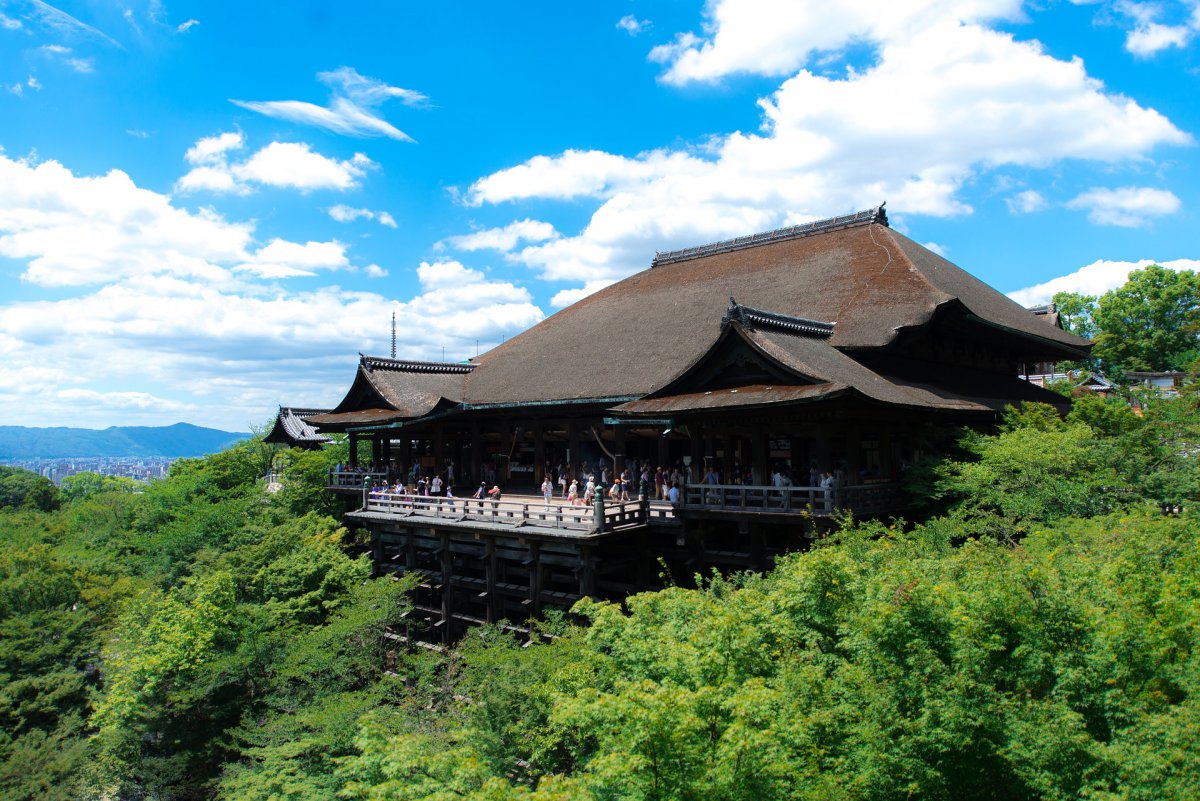
Otowa Waterfall (音羽の滝)
After exploring the main hall, take the stone steps on the east leading down to Otowa Waterfall. “Otowa” is the name of the mountain where the temple grounds lie, and the small waterfall consists of three separate streams of spring water that come from the under the mountain. It is believed that drinking the water will bring good fortune for love, academic success and longevity. You can use the small ladles prepared by the temple to scoop up water from the streams. It is very common to directly sip the water from the ladle, but you can alternatively use your hand to avoid having your mouth touch the ladle if you’d like.
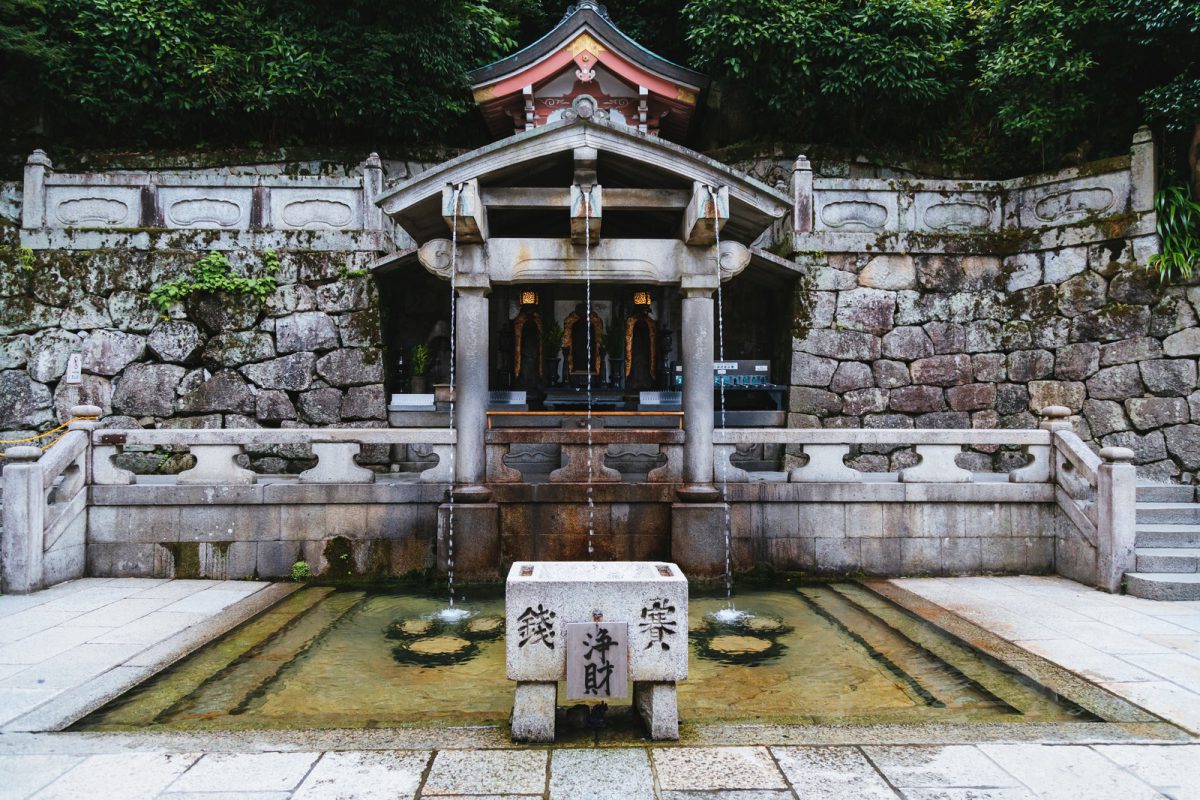
Okunoin (奥の院)
Okunoin is only a short walk from the main hall of Kiyomizu Temple. Follow the route and take the path leading up to Amida Hall (阿弥陀堂), instead of going down to Otowa Waterfall (Okunoin is found right above Otowa Waterfall). Then, you will soon find the beautiful building that has a small stage. From the stage, you can enjoy the picturesque views of the main hall and the wooden stage along with seasonal beauties such as cherry blossoms in spring and autumn leaves in fall. During these seasons, many people flock here to take memorable pictures, particularly during the period where there are special night events when cherry blossoms and autumn leaves are beautifully lit up in the dark!

Three-story Pagoda (三重塔)
Officially designated as an Important Cultural Property, the symbolic three-story pagoda of Kiyomizu Temple has a long history dating back to 847. What we can see today is a reconstructed version that was completed in 1632. This beautiful pagoda stands about 32 meters high, making it one of Japan’s largest three-story pagodas. As you explore the city of Kyoto, you may catch a glimpse of it from far away. Although the inside of the pagoda is not open to the public, it is still worth the visit.
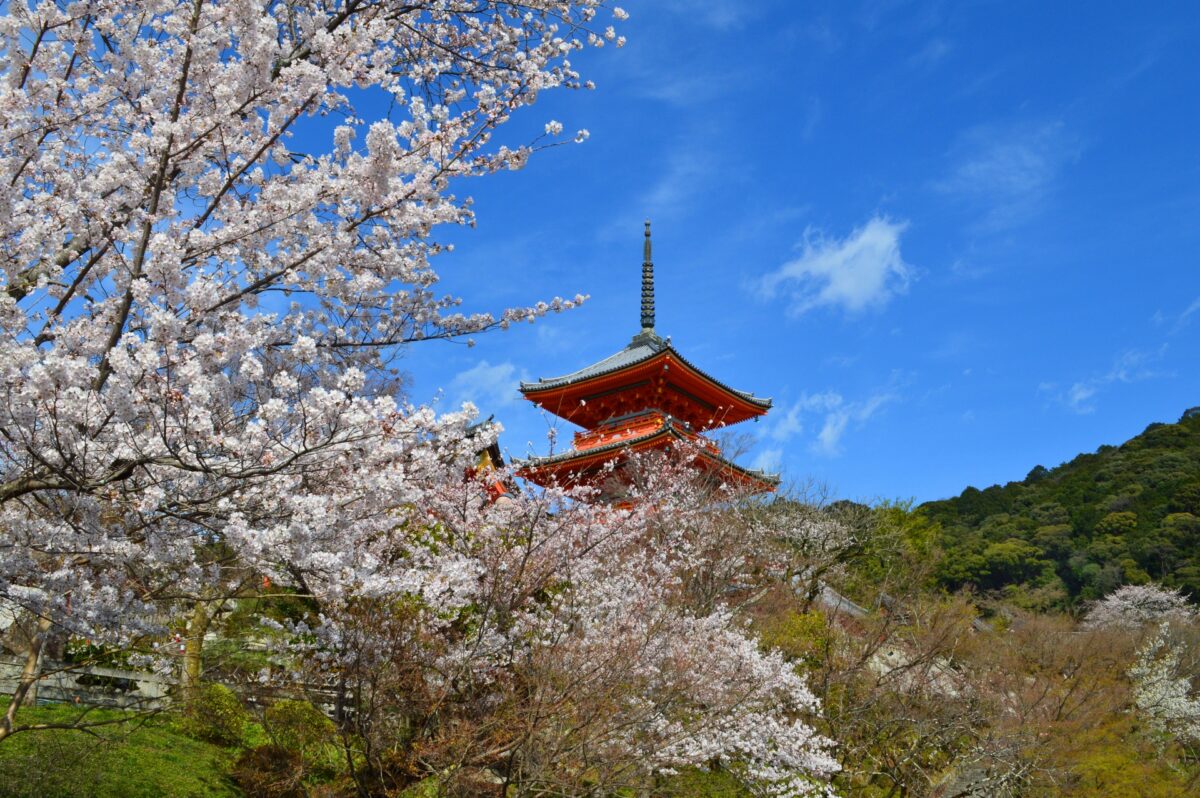
4. Where to visit around Kiyomizu Temple
Kodaiji Temple (高台寺)
This Zen temple which is about a 10-minute walk from Kiyomizu Temple is designated as a World Cultural Heritage Site. This historic temple was established in 1606, and belongs to the Rinzai Sect of Buddhism. Highlights at Kodaiji Temple include the stunning Japanese Zen gardens which allow visitors to spend a peaceful time in a relaxing atmosphere. The best time of year to visit the temple is spring and fall, when nighttime illumination events are held. Enjoy the amazing beauty of cherry blossoms and autumn colors while exploring the historical temple grounds!

Sannenzaka & Ninenzaka (三年坂&二年坂)
Beautifully stone-paved alleys which are home to a great number of stores, cafes, restaurants, tea houses and souvenir shops. Enjoy exploring the lovely alleys which are lined with perfectly preserved traditional Japanese houses and buildings. You will never have trouble finding memorable souvenirs, including Kyoto’s traditional handcrafts and snacks to take home with you. It is also a perfect spot to experience the unique food culture in Kyoto!
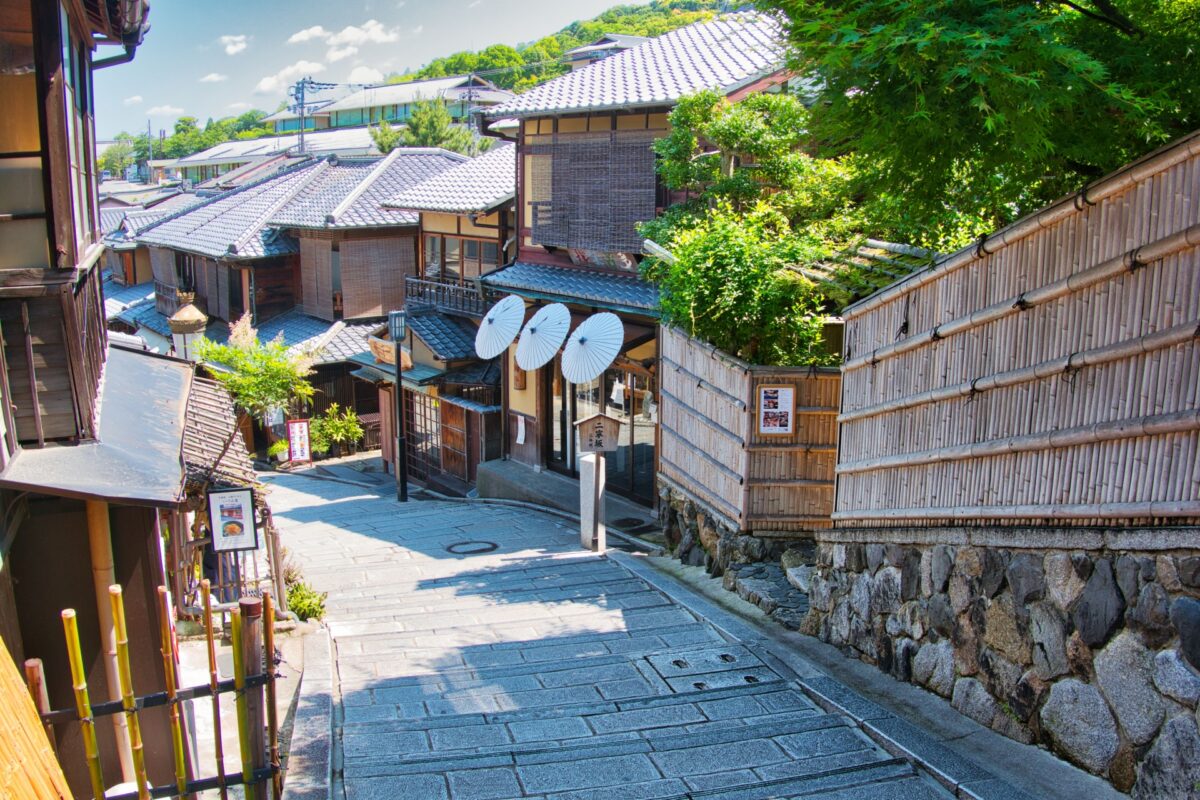
Kenninji Temple (建仁寺)
Founded in 1202 by a Buddhist monk, Kenninji Temple is said to be the oldest Zen temple in Kyoto. This sacred temple is best known for the traditional Japanese folding screen called “Fujin Raijin Zu” (the gods of wind and thunder). Their stunning Zen rock gardens are also worth a visit. It is conveniently accessible from other must-visit tourist attractions such as the Gion District.
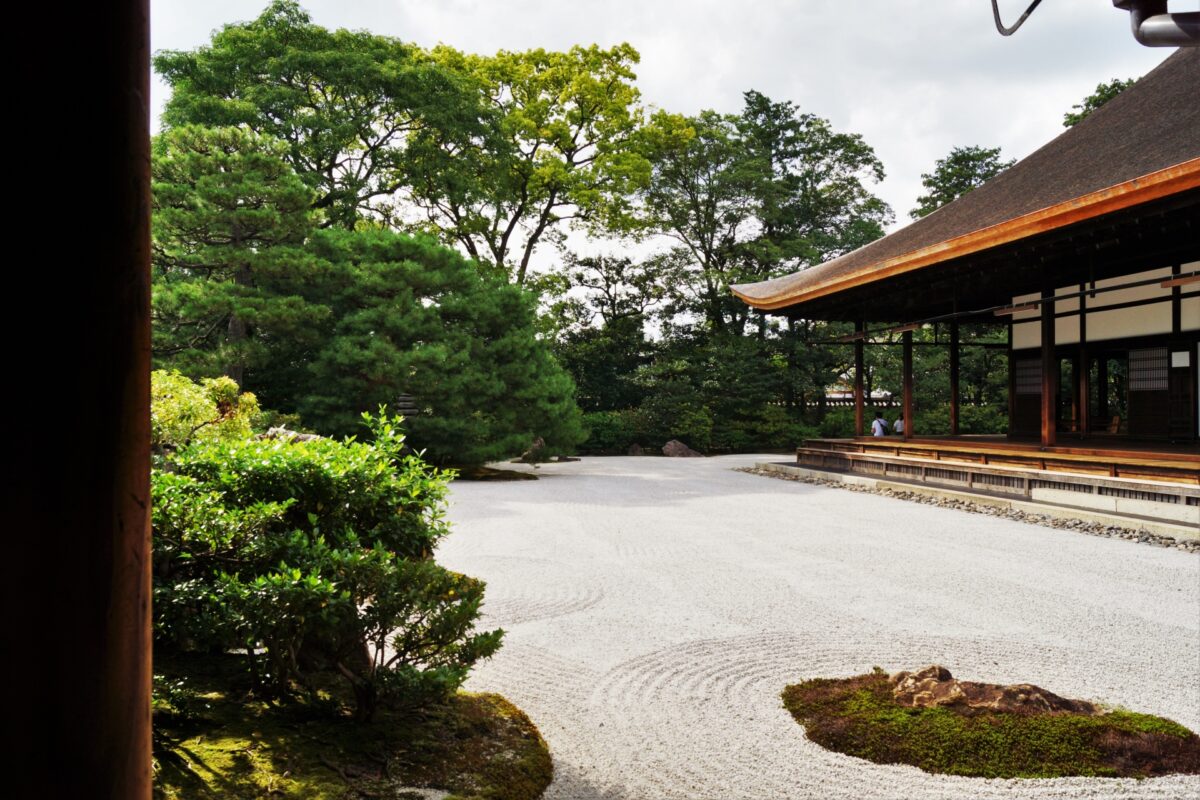
Whether you are interested in Japanese history or not, Kiyomizu Temple is a must-visit spot while in Kyoto. The historic buildings are beautiful, and worth visiting once in your lifetime. Special nighttime illumination events are also held in early spring, summer and autumn which are perfect times to enjoy the beautifully illuminated historic temple complex!
Japan Wonder Travel Tours in Kyoto
When you are visiting Kyoto and you need some help organizing your trip, you came to the right place. We’re happy to help you make your trip to Kyoto the best trip ever. We can advise you on where to go or even better, show you around with a local, English speaking guide. Let us help you create safe, comfortable, and unforgettable memories in Kyoto!
▶Kyoto 8h Private Custom Highlight Tour with Licensed Guide
On this full-day private tour of Kyoto, you will be able to see the highlights of Kyoto in just one day and at the same time develop a deeper understanding of both the culture of the area and Japan as a whole.

▶Kyoto 10-Hour HIGHLIGHT Private Tour
If you only have a day or two in Kyoto, we offer a full-day tour of the city, enabling you to immerse yourself in and fully enjoy the entire city of Kyoto in just 10 hours!
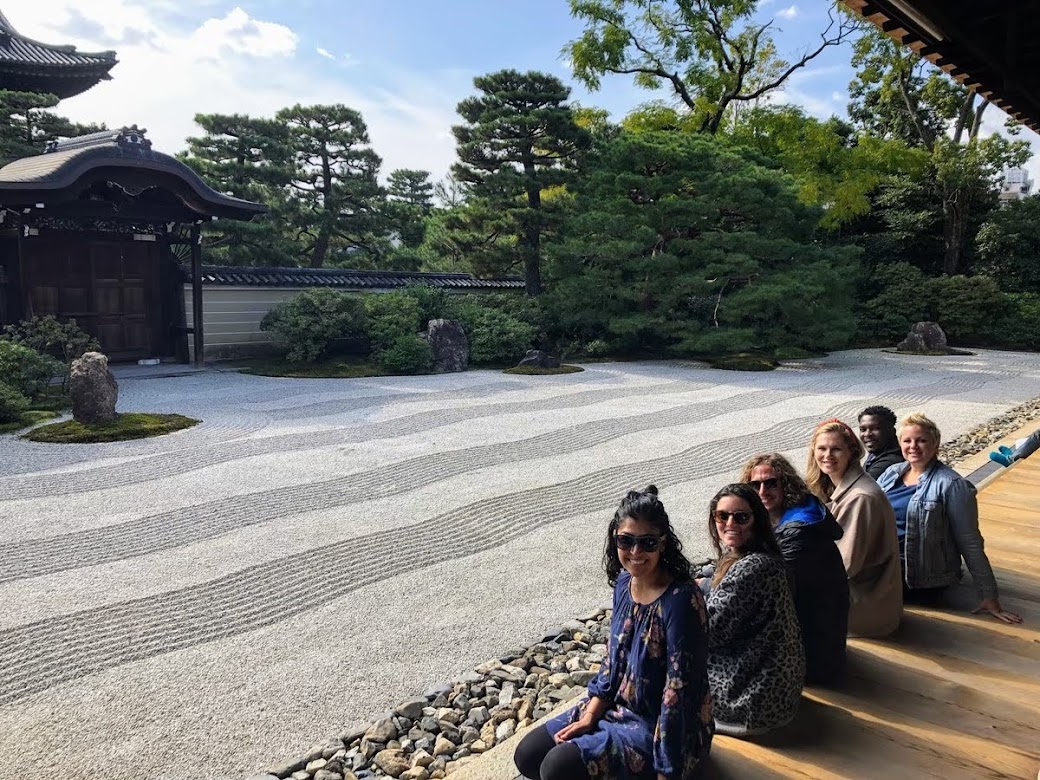
▶Explore Nishiki Market: Food & Culture Walk
If you’re looking to learn more about the culture and the local cuisine of Kyoto, this is the perfect tour for you! Take part in this Kyoto food and drink tour and explore the 400-year-old market and the famous surrounding areas.
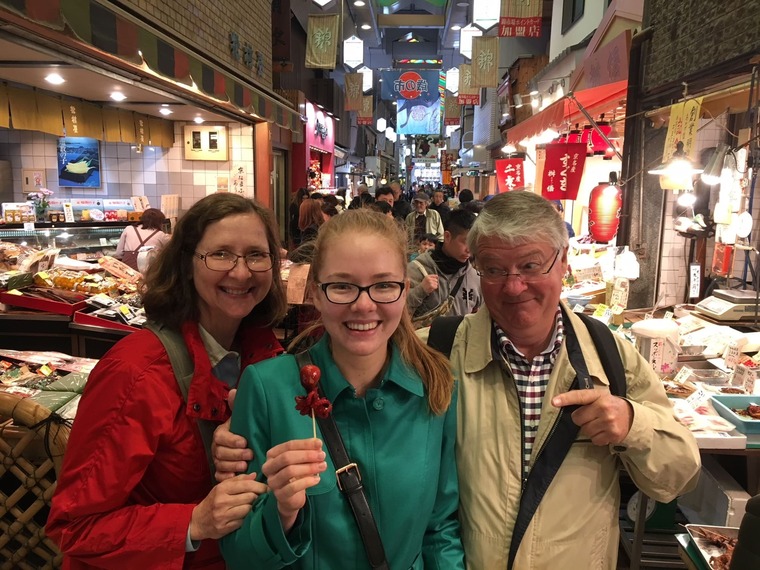
Find Other Experience
▶Kimono Rental
Kyoto is the best city to explore in kimono, Japanese traditional clothing. You can choose the one you like the most from several patterns and colors at the rental shop. In Kyoto, two locations are both accessible from the main tourist attractions which makes it easy to try it on and explore the city for a day!

Follow us on Instagram, Facebook and Twitter for more travel inspiration. Or tag us to get featured!
Happy traveling!
Other articles you might be interested in
This post may contain some affiliate links. When you click through and make a purchase we may receive some commission, at no extra cost to you.

